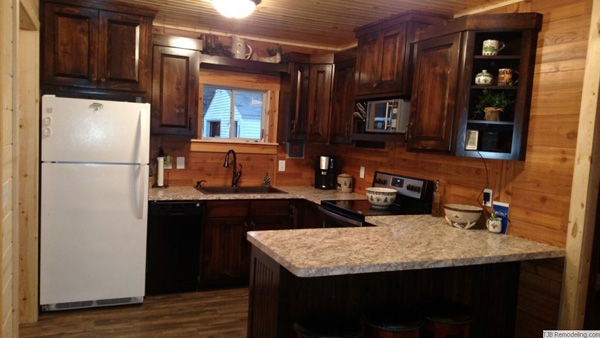How to design a kitchen remodel?

Designing a kitchen rework involves cautious planning, creative pondering, and a focus to element. Whether you are working with a professional designer or tackling the project on your own, this is a step-by-step guide that will help you design a successful kitchen remodel:
Set Goals and Budget:
Determine your targets for the rework. Are you trying to improve functionality, replace aesthetics, improve storage, or the entire above?
Set a realistic finances for the entire project, together with supplies, labor, and contingency.
Gather Inspiration:
Collect inspiration from magazines, web sites, social media platforms, and home enchancment exhibits. Create a temper board or digital folder to organize your ideas.
Assess Current Kitchen:
Evaluate your current kitchen's structure, strengths, and weaknesses. Note areas that want improvement and identify any structural limitations.
Layout and Flow:
Consider the kitchen's work triangle (sink, range, refrigerator) and the way easily you'll be able to transfer between these factors.
Decide whether to take care of the existing layout or discover various configurations.
Functionality and Storage:
Determine your storage wants. Plan for cabinets, drawers, and pantry area based in your cooking habits and way of life.
Incorporate storage solutions like pull-out cabinets, lazy Susans, and utensil organizers.
Appliances and Fixtures:
Choose appliances that fit your cooking type and needs. Consider vitality effectivity and the size of home equipment in relation to obtainable area.
Select fixtures like taps, sinks, and lighting that complement the general design and offer practicality.
Materials and Finishes:
Decide on supplies for countertops, cupboards, backsplashes, and flooring. Consider factors similar to durability, upkeep, and aesthetics.
Choose finishes like hardware, paint colours, and tile patterns that create a cohesive look.
https://www.cerlettikennedy.com/ or Professional Help:
Use design software or work with knowledgeable designer to create detailed plans and 3D renderings of your new kitchen.
Detailed Plans:
Create detailed plans that embrace dimensions, placement of home equipment, cabinets, and fixtures. Ensure all components fit within the house.
Permits and Codes:
Check native constructing codes and regulations to make sure your design meets necessities. Obtain needed permits if structural adjustments are deliberate.
Contractors and Tradespeople:
Hire contractors and tradespeople for duties like plumbing, electrical work, and building. Get multiple quotes and examine references.
Project Timeline:
Develop a timeline that outlines every section of the challenge, from demolition to finishing touches.
Demo and Construction:
If wanted, start with demolition and structural work. This is the stage to maneuver or remove walls, reroute plumbing, and update electrical systems.
Installation:
Install cabinets, counter tops, fixtures, home equipment, and other parts in accordance with the detailed plans.

Finishing Touches:
Paint walls, install backsplashes, add trim, and apply any final touches that complete the look of your new kitchen.
Quality Check and Cleanup:
Ensure that every one work is completed to a high commonplace. Clean up the area to organize for use.
Final Inspection and Approval:
If required, schedule a ultimate inspection to ensure every little thing meets building codes and rules.
Enjoy Your New Kitchen:
Once the work is completed and inspections are passed, you can start using and enjoying your newly reworked kitchen!
Remember that good planning is key to a successful kitchen remodel. Take your time to make decisions, and consider in search of recommendation from professionals if needed. Your newly designed kitchen ought to replicate your vision, enhance performance, and improve your general dwelling experience..
